- You are here:
- Home »
- Author's archive:
All posts by Bike Master
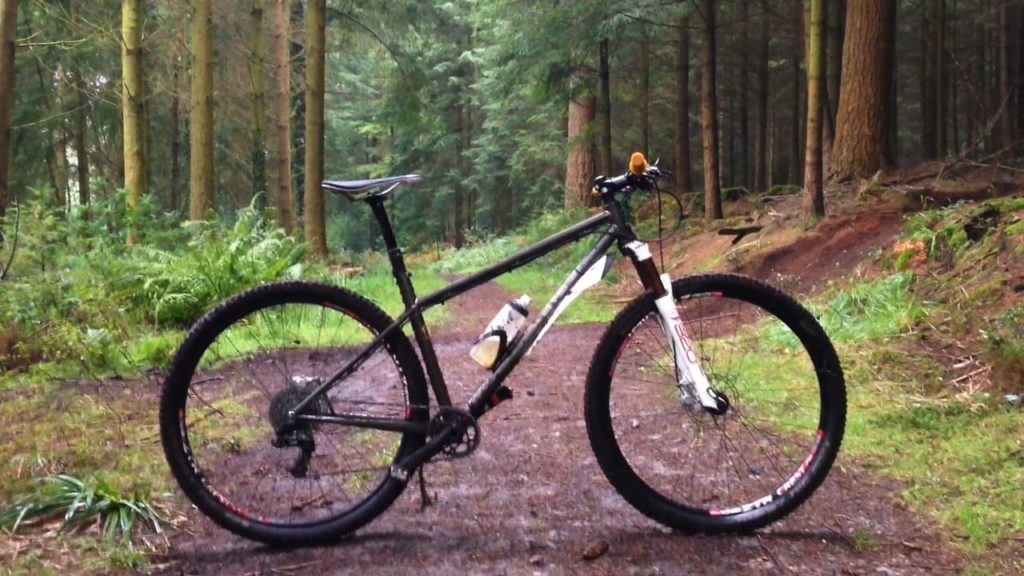
Hardtail Mountain Bike: The Best Cross Country Hardtail Mountain Bikes
A hardtail carbon fiber mountain bike is designed with a solid frame and a suspension fork in the front part making it good for rough terrain or a cross-country race. It is an easy to maintain option and works like a full-suspension mountain bike and is ideal for mountain bikers who are starting to ride mountain bikes or just want something easy to handle in different terrain with a bike in a decent price range. However, you have to look around to see what the best choices are for your mountain bicycle requirements.
 Some of these options are designed with a variety of great features in the body. Others are available only as frames where you’d have to add some extra things onto it to make the bike work. You should look carefully at what’s around so you can find a choice that fits in perfectly with your riding needs.
Some of these options are designed with a variety of great features in the body. Others are available only as frames where you’d have to add some extra things onto it to make the bike work. You should look carefully at what’s around so you can find a choice that fits in perfectly with your riding needs.
Canfield Brothers Nimble 9
The Nimble 9 uses a steel frame and has sliding drop outs. This allows you to run it with one speed or with gears depending on your preference. The tube set is also light in weight and isn’t too complicated to use.
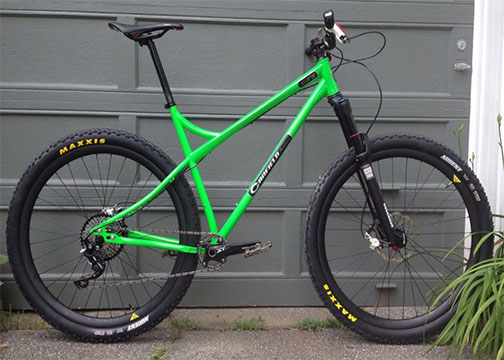
Zen Trail
Some hardtail bikes only come with frames. The Zen Trail is one such instance. It a little more than 23 pounds so it should not be too hard to pedal along.
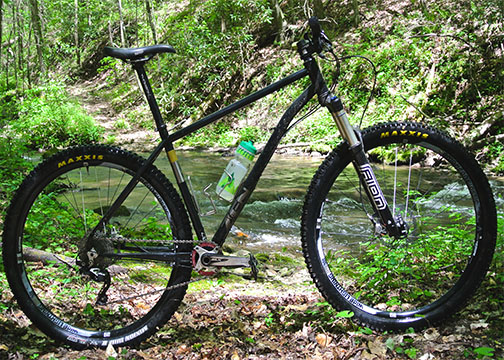 This uses a head tube at 68 degrees so you can effortlessly steer the bike when all its parts are in place. It also has a 120 mm fork and 16.9-inch chainstays. This works only for geared setups though as it does not come with any dropouts you can adjust for handling a single speed setup. You should check on how well you can adjust this based on what you might be more interested in using while out on the trail.
This uses a head tube at 68 degrees so you can effortlessly steer the bike when all its parts are in place. It also has a 120 mm fork and 16.9-inch chainstays. This works only for geared setups though as it does not come with any dropouts you can adjust for handling a single speed setup. You should check on how well you can adjust this based on what you might be more interested in using while out on the trail.
Transition TransAM
The wheels on the TransAM are rather large. You can get a 27.5 or 29-inch model depending on which you prefer. It offers a low frame and has a stronger body that doesn’t bend easily. This works with a flexible axle system that can work with a single speed or a geared option depending on your preference.
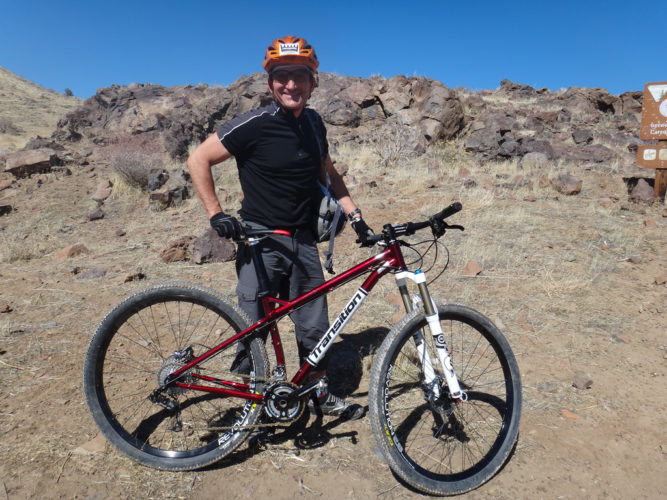 The fork is 120 mm on the 29-inch option and 130 mm on the 27.5-inch variant. These are good choices to have but you should check carefully on how well you can steer either option.
The fork is 120 mm on the 29-inch option and 130 mm on the 27.5-inch variant. These are good choices to have but you should check carefully on how well you can steer either option.
Kona Honzo
The Honzo is available in one of many frame styles. You can order this hardtail bike in a carbon, steel, aluminum, or titanium model. However, the steel and titanium models are frame-only so you’d have to get other parts ready if you have one of those options.
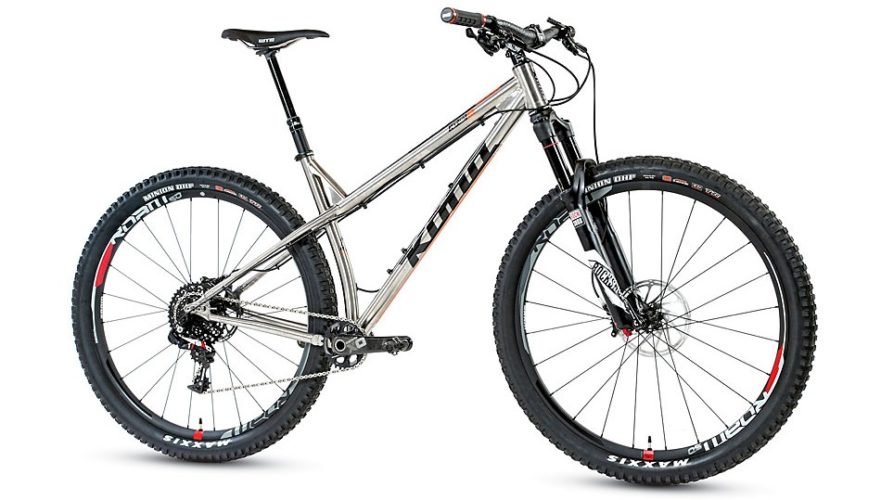 The frame is a little longer than most other options. It is about 460 mm long, thus giving you enough room for pedaling without feeling cramped. The 68-degree head tube angle gives you less effort needed for steering the bike, thus helping you get through some of the tightest spots around on the trail.
The frame is a little longer than most other options. It is about 460 mm long, thus giving you enough room for pedaling without feeling cramped. The 68-degree head tube angle gives you less effort needed for steering the bike, thus helping you get through some of the tightest spots around on the trail.
Chromag Stylus
Chromag offers the Stylus with 26 and 27.5-inch wheels depending on the model you choose. This is designed with trails in mind as it has enough shock absorption features on its frame to keep it steady and active. The 160 mm fork is small enough to give you enough control over the bike without being too hard to use.
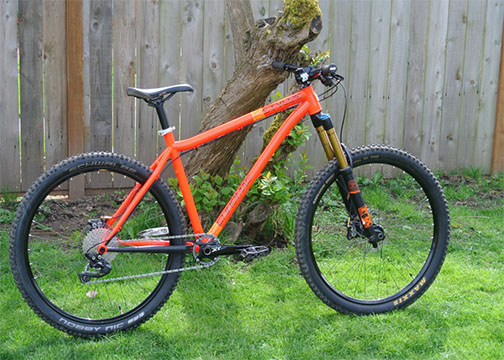
Norco Torrent
The design of the Torrent features a 67-degree head tube and a lower bottom bracket. This creates a powerful look but the chain stays still keep the weight centered. As a result, you don’t have to adjust your weight far too much when trying to move forward. You can order chain stays from 16.5 to 16.8 inches depending on your size.
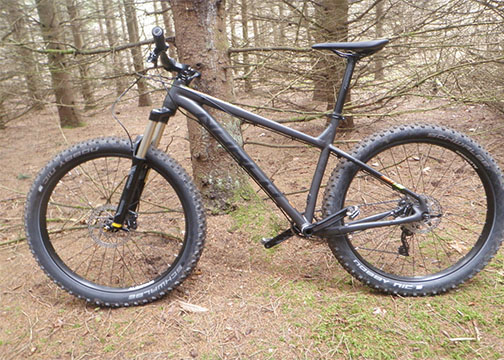
Niner ROS 9
You can order a 120 or 140 mm measurement on the Niner ROS 9 fork. This allows you to have a looser or tighter control over the bike depending on the choice you opt for.
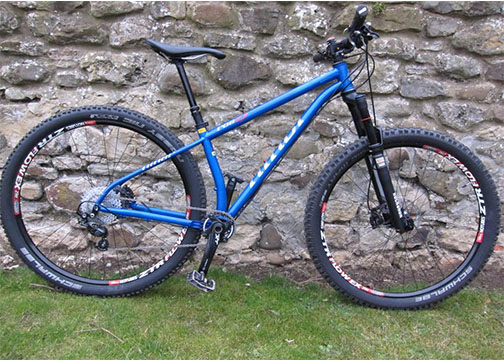 The BioCentric II bottom bracket is a very popular feature. This helps you choose between a geared or single-speed arrangement. Meanwhile, the chain stay can be adjusted from 16.5 to 16.7 inches in length. This should provide you with a more versatile riding experience that is easier for more riders.
The BioCentric II bottom bracket is a very popular feature. This helps you choose between a geared or single-speed arrangement. Meanwhile, the chain stay can be adjusted from 16.5 to 16.7 inches in length. This should provide you with a more versatile riding experience that is easier for more riders.
Commencal META HT AM CrMo
Guide brakes are a key part of what makes this bike from Commencal work. These brakes help with easing you on many paths and keep the gears from being too active while you brake. You can order this in either a standard steel design or with a lighter aluminum frame. The 160 mm fork is designed to create an effortless ride.
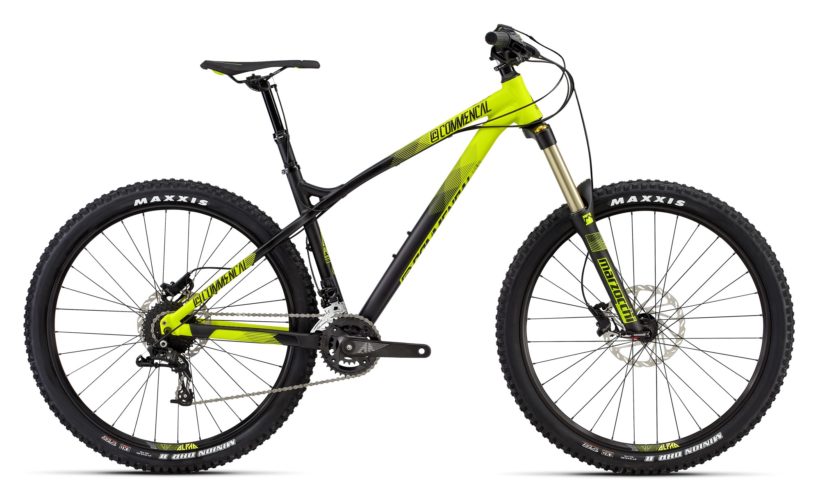
On-One 45650B
This is a more affordable option among hardtail mountain bikes. When all of its parts are applied, it can go for less than $1,000 depending on what you choose. This comes with 27.5-inch wheels. It can work with a 4, 5 or 6-inch fork depending on your demands. The 17-inch chainstay is good for more controls while the frame is a little shorter than most others, thus targeting those aiming for faster reaches on their bikes.
Santa Cruz Chameleon
The Chameleon gets its name from how it is easy for you to get it adjusted in a variety of ways. To start, you can work with a fork from 120 to 150 mm to go along with the main frame. You can also get 26 or 27.5-inch wheels on this model. The 16.5-inch chainstay is consistent among all styles. This is an attractive model that is easy to utilize and can especially help you get out on the trail quickly. Be advised that it can cost close to $2,000 for all the necessary parts depending on what you order for it.
These are all good options to have when it comes to getting the most out of your mountain biking needs. Hardtail mountain bikes are great for those who simply want a bike for the road without being too hard to use. You will be surprised by the extensive variety of great mountain bikes worth having and how you can get them adjusted in many forms.
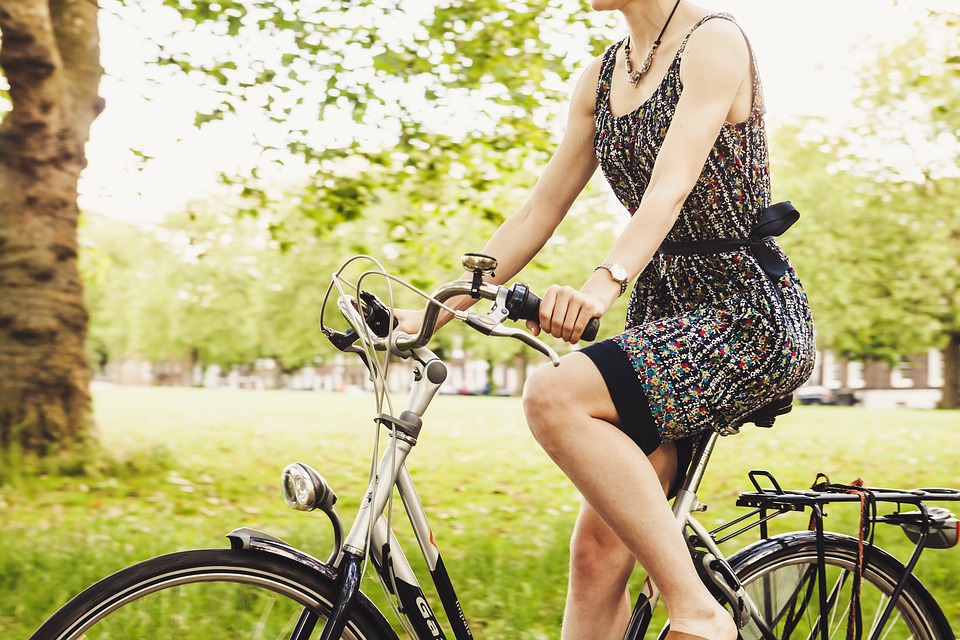
How to Choose the Best Hybrid Road Bike for Both Men and Women
A hybrid road mountain bicycle or hybrid bicycle is a bike in an upright position, designed as a comfort bike for riders who use a variety of surfaces and rough terrain. It is made with road riding in mind but it can also handle a number of rougher surfaces due to its suspension fork, saddle, tires, disc brakes and suspension seatpost. This kind of bike is great for when you’re trying to ride on a variety of surfaces on your route or you just want a road bike that makes it easier for you to handle the unpredictable, especially in rough terrain or even when commuting Hybrid road bikes are perfect for city riding too and many are available from your local bike shop.
This kind of bike is great for when you’re trying to ride on a variety of surfaces on your route or you just want a road bike that makes it easier for you to handle the unpredictable, especially in rough terrain or even when commuting Hybrid road bikes are perfect for city riding too and many are available from your local bike shop.
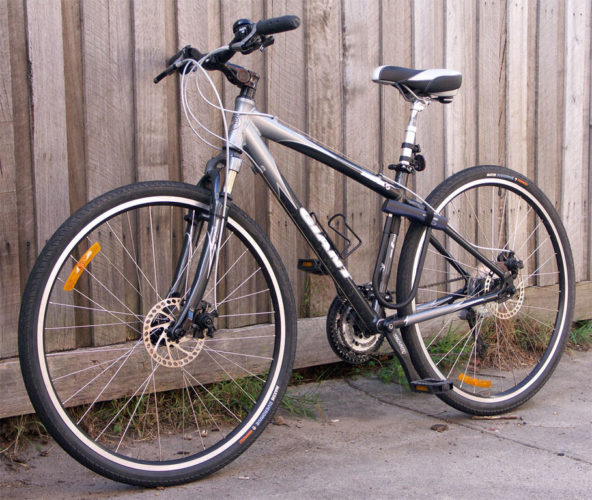 But you will have to check on how your hybrid mountain road bike is designed and whether it is comfortable. Several things will go into your bike. Like all riders, here’s a look at what to look for when choosing a great model with alloy rims at the best deals including some commonplace points you are likely to see with some choices for that ultra smooth ride.
But you will have to check on how your hybrid mountain road bike is designed and whether it is comfortable. Several things will go into your bike. Like all riders, here’s a look at what to look for when choosing a great model with alloy rims at the best deals including some commonplace points you are likely to see with some choices for that ultra smooth ride.
How Are the Wheels?
The wheel size is important to review. A wheel will be 700 cc in most cases. A smaller 26-inch wheel set with alloy rims may be found in some cases. Check carefully as a larger series of wheels might provide you with more control over your steering and get you some of the best deals.
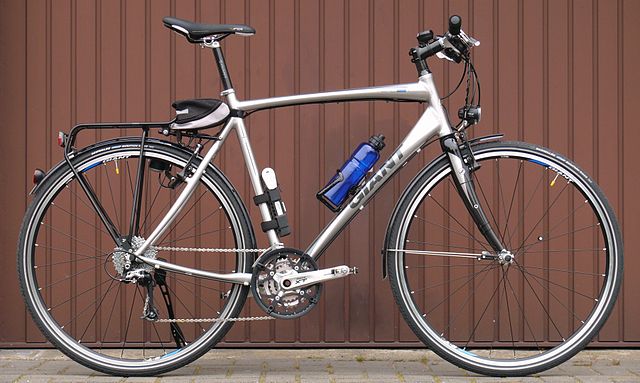 You should also look for wheels that support tires with good treads to handle many bits of dirt or debris that you might come across while on city roads for that ultra smooth ride. They should also help you stop on a dime without being at risk of slipping off or being too hard to apply on a road.
You should also look for wheels that support tires with good treads to handle many bits of dirt or debris that you might come across while on city roads for that ultra smooth ride. They should also help you stop on a dime without being at risk of slipping off or being too hard to apply on a road.
What Is It Made Of?
You’ll need a mountain bike that isn’t too heavy and in an upright position. A hybrid bicycle made of carbon fiber is a great choice for being strong and light in weight. Still, it might be too expensive for your budget. An aluminum or steel choice might be better if you have less money to spend.
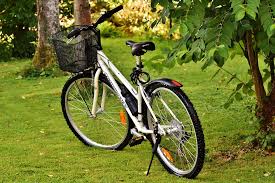 Steel is smooth and strong but heavy. Aluminum is light and stiff but it can be tough on some rougher roads. Make your decision carefully based on how you plan on using your bike assuming you aren’t willing to spend extra on a carbon fiber body.
Steel is smooth and strong but heavy. Aluminum is light and stiff but it can be tough on some rougher roads. Make your decision carefully based on how you plan on using your bike assuming you aren’t willing to spend extra on a carbon fiber body.
Review the Gears
Gears can be varied on hybrid bikes. Some bikes have just one speed. Others use more than 20. When more gears are involved, the individual parts on your bike will be vast. You’ll have more cogs and chain rings and other parts around a bike with more gears.
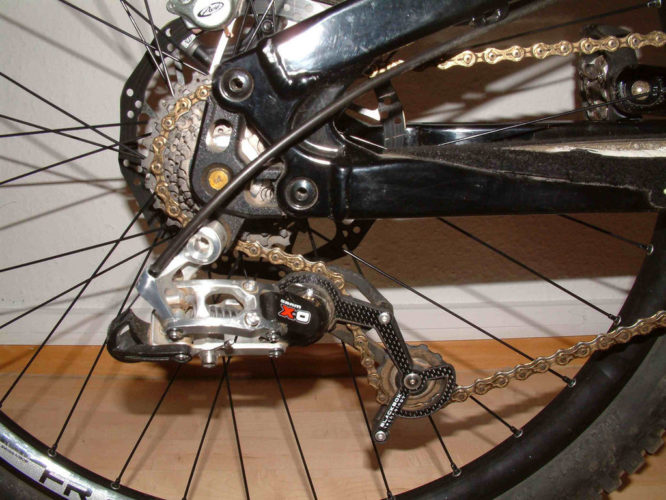 You should use more gears if you plan on going up and down loads of hills. A single-gear option is good enough if you’re only going to be on flat surfaces.
You should use more gears if you plan on going up and down loads of hills. A single-gear option is good enough if you’re only going to be on flat surfaces.
How Is the Suspension?
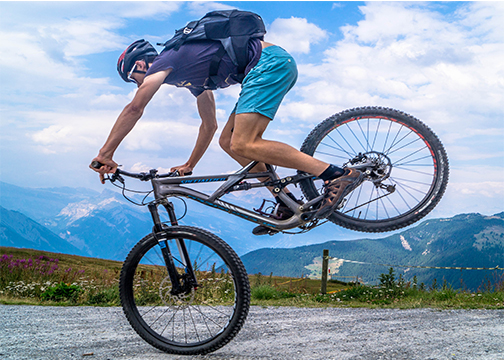 You don’t always have to use a suspension feature on a hybrid bike. A suspension will add more weight and make it harder for you to pedal. You should only go for a suspension-free option if you’re going to be on flat surfaces for the most part. A front suspension option can always be added if you plan on riding on rougher roads.
You don’t always have to use a suspension feature on a hybrid bike. A suspension will add more weight and make it harder for you to pedal. You should only go for a suspension-free option if you’re going to be on flat surfaces for the most part. A front suspension option can always be added if you plan on riding on rougher roads.
Compare the Brakes
Check the brakes on your hybrid bike. Rim brakes are popular on these bikes as they use pads that grip onto your rims. This is easy to use but you would have to check carefully on how the brakes are cushioned. This is to see that the rims and brakes alike are functional. You might have to replace one or the other if they are wearing out. It’s not too hard to see the visual signs of fatigue, though.
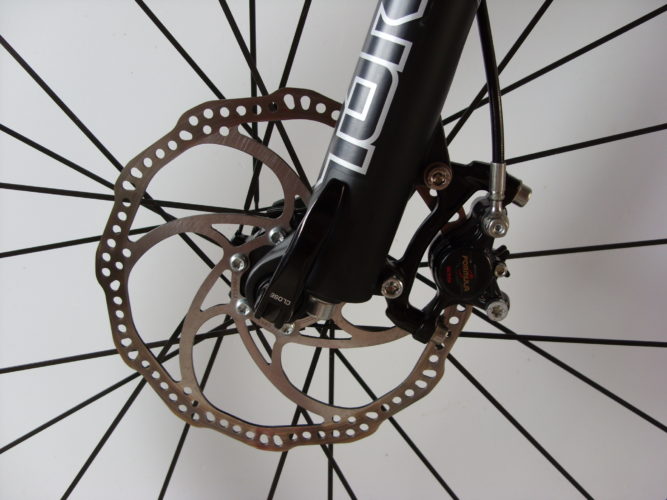 A disc brake can be installed. With this, brake pads will grip onto a rotor on your wheel hub. You can opt for a mechanical choice that requires regular adjusting but is still strong. A hydraulic choice that adjusts itself can be used too.
A disc brake can be installed. With this, brake pads will grip onto a rotor on your wheel hub. You can opt for a mechanical choice that requires regular adjusting but is still strong. A hydraulic choice that adjusts itself can be used too.
How Are the Handlebars
You need good handlebars that are easy to grip onto. Your handlebars will typically be higher than the seat. This adds to your overall comfort.
The shapes of your handlebars will vary by model. You can find flat bars that are heavy and let you sit upright to give you an easier view of the road while riding.
You can also choose drop bars that are light and let you use one of many riding positions. You will be placed at a lower position while riding, though.
In other words, choose your handlebars based on your comfort level. Check on how you normally ride a bike and see if the choice you make is suitable for your riding needs.
Do You Need a Cargo Rack?
A cargo rack can be used on the front or back part of your bike to hold things. However, this works best if you’re going to be in city situations where stop-and-go traffic is common.
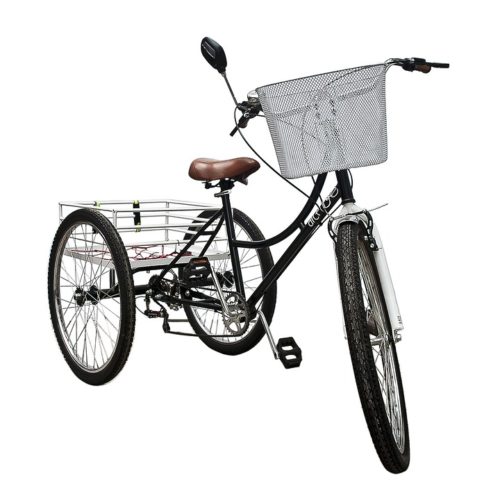 The problem with a cargo rack is that it can add a bit of extra weight to your bike. It might also be tough to secure onto some bike models depending on what you order. Of course, there is also the concern over the cargo rack being tough to secure with items potentially being at risk of falling out of it while in transit. Be cautious when choosing a good cargo rack if you do wish to opt for one.
The problem with a cargo rack is that it can add a bit of extra weight to your bike. It might also be tough to secure onto some bike models depending on what you order. Of course, there is also the concern over the cargo rack being tough to secure with items potentially being at risk of falling out of it while in transit. Be cautious when choosing a good cargo rack if you do wish to opt for one.
Can You Add Fenders?
You could also add fenders to a hybrid road bike. Like with a cargo rack, it will add weight and drag. However, such fenders will be useful if you’re in potentially dirty areas that entail loads of grime, dirt, and puddles flying around. Fenders can keep the sprays of such items from being spread all around your bike. This, in turn, keeps you from spraying it all around as it gets in. You have to use fenders carefully if you want to keep your ride comfortable and entertaining but it shouldn’t be used if you’re in a spot where you don’t plan on getting dirty or in any tight spots.
Good luck in your search for a functional and easy-to-use hybrid road bike. Whether you’re in a city or on hilly roads, you’ll find a great choice that fits your needs when you just look and compare options well enough.

How to Choose the Best Road Bike Rims and Tires
As you travel down the road on your mountain bike, your tubular tires, rims, and tread will keep you moving. These bicycle wheels are designed to work quickly and move without being too rough on your body as you ride. They should handle bumps and shocks well and still stay responsive on any road you’re on—or even off-road wheels you are using.
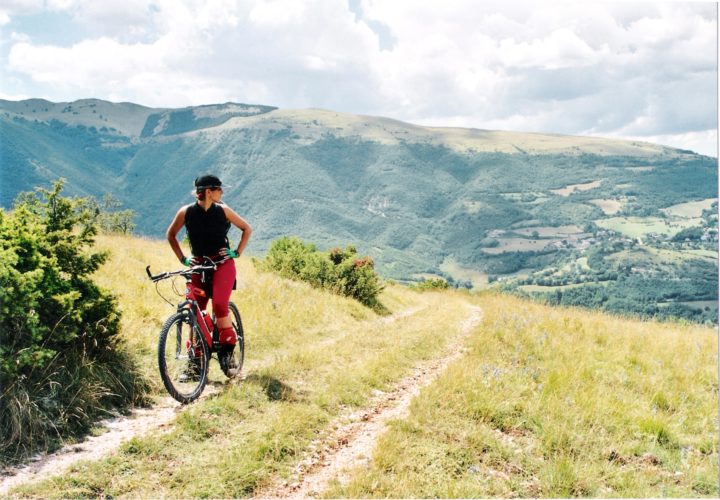 Still, you should watch for how the hybrid bike or mountain bike tires work as every option for your use is unique. You must know what to do when choosing the right rims and tires for a road bike. You need to look at tire width, tire size, puncture resistance, tread, and much more.
Still, you should watch for how the hybrid bike or mountain bike tires work as every option for your use is unique. You must know what to do when choosing the right rims and tires for a road bike. You need to look at tire width, tire size, puncture resistance, tread, and much more.
The tires and rim types are designed to provide a grip on the road. The rims will help support the tires and keep you moving. When paired together, they get you further down the road. To make it all work, however, you have to choose an option that fits well for your needs and isn’t too hard to use.
Check the Casing
You must look at the casing on your road bike tires and rims. The casing refers to how flexible the tire is and how it can keep from stretching too much. The casing helps to maintain the shape of a tire.
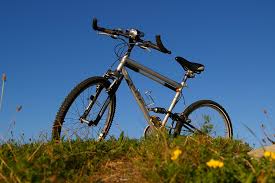 Check on the threads per inch (or TPI) of the casing. When the TPI is higher, the casing is thinner. This offers a lighter weight but also a lower rolling resistance. Still, they are fragile and can be quickly damaged on rough roads.
Check on the threads per inch (or TPI) of the casing. When the TPI is higher, the casing is thinner. This offers a lighter weight but also a lower rolling resistance. Still, they are fragile and can be quickly damaged on rough roads.
Think about the types of roads your road bike will go on. You will need an option with a lower TPI if you plan on going on rougher surfaces that aren’t always even. A higher TPI is best for the flattest and most ordinary surfaces.
The density of the casing could add a slight bit of drag to your ride. This is due to ones that are denser often taking more power for you to propel forward. The added weight can be a hassle although it will result in a stronger setup.
Review the Threads
The threads on your tires help to handle moisture, small pebbles, and other things that your bike might get onto while riding. Check on how the threads and designed and make sure they’re strong. Rubber and butyl are great for most tires but nylon or Kevlar materials might be best if you’re riding on roads that might be tougher or riskier to handle.
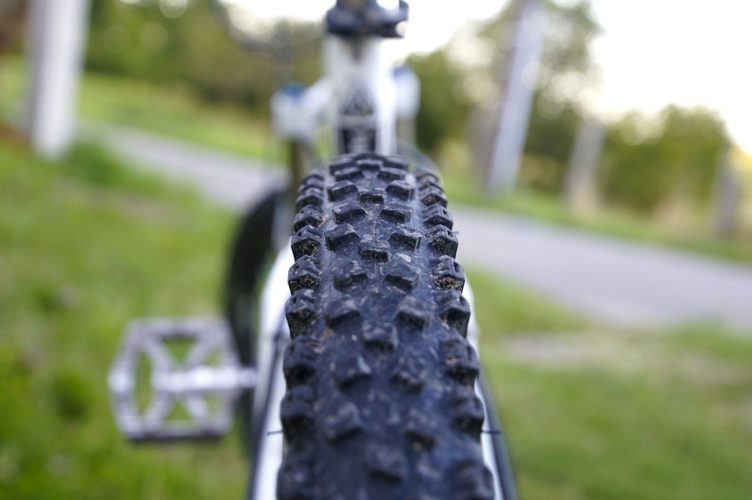 Some road bike tires don’t come with any threads. Such tires are best for flat surfaces that don’t have lots of small pebbles and other minimal materials you could run into. While these are simple and easy to maintain, you should be cautious when using them. You don’t want to use one of these in wet conditions where the weather is not cooperating.
Some road bike tires don’t come with any threads. Such tires are best for flat surfaces that don’t have lots of small pebbles and other minimal materials you could run into. While these are simple and easy to maintain, you should be cautious when using them. You don’t want to use one of these in wet conditions where the weather is not cooperating.
Should You Go Tubeless?
Your road bike tire can come in a tube-based or tubeless design. A typical rubber tube will keep the air in perfectly. You can find some tires that use butyl tubes that don’t lose air as fast as rubber does.
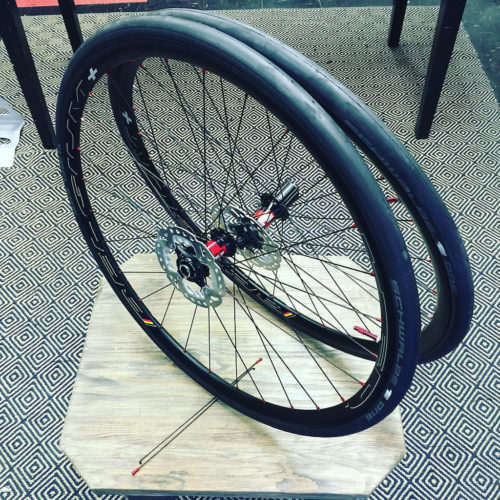 Still, a tubeless tire might be intriguing if you want something that is a little easier to maintain. This does not require air but it does work with a special rim design that features a series of small connectors. These will latch to the body of your tire to keep its parts in place. This is attractive but the threads and rims can be at risk of wearing out quickly, especially with there being less space between the outside parts of the tires and the rims.
Still, a tubeless tire might be intriguing if you want something that is a little easier to maintain. This does not require air but it does work with a special rim design that features a series of small connectors. These will latch to the body of your tire to keep its parts in place. This is attractive but the threads and rims can be at risk of wearing out quickly, especially with there being less space between the outside parts of the tires and the rims.
Check the Size of the Rim
The rim should never be ignored when finding great parts for your road bike. You must choose a rim that has a great section that handles air and doesn’t cause a great deal of drag.
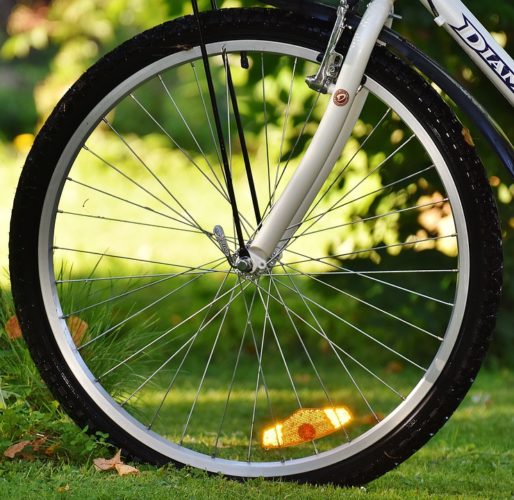 For road purposes, a deep section rim is best. This offers a thicker design that keeps the spokes from being too long. Such rims will keep the wind from being too strong within your bike.
For road purposes, a deep section rim is best. This offers a thicker design that keeps the spokes from being too long. Such rims will keep the wind from being too strong within your bike.
A narrow rim option can also be used for your setup. This uses a very slim design around the ends and often works best for tubeless tires. It creates a lightweight setup but it must be used cautiously based on how deep it can get. Be aware of what you can use when making it work in any situation.
Look At the Spokes
Don’t forget to see how the spokes on the rims are designed. The spokes can be made with flat materials. These are designed to keep from sticking out too much from outside the wheel. Flat spokes cut through the wind quite well and keep the drag in check.
Round spokes might be better if you are adding lots of weight onto the bike. They are also great if you have plenty of uphill or downhill climbs on your road bike. Flatter spokes are best for flat surfaces.
Does the Rim Have To Be Wide?
You might think that a wider rim will do more to harm your ride. The truth is that a wider rim isn’t going to add more drag onto the ride than you think.
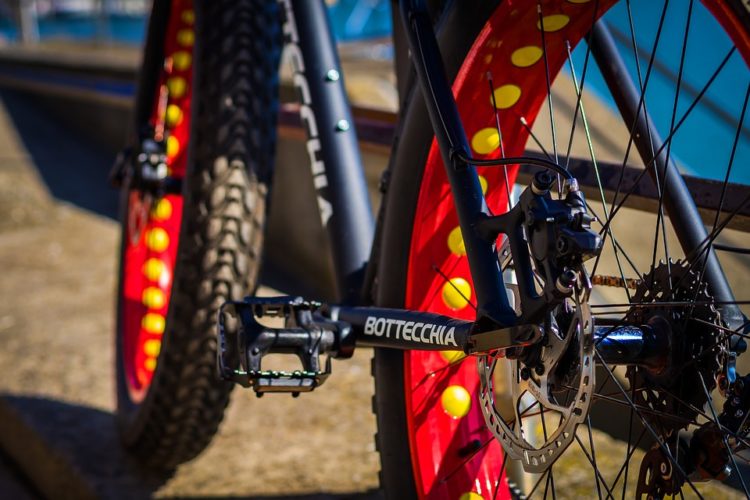 If anything, a wider rim gives you a little more freedom and time for correcting your movements while on the road. You will have the power to keep the bike steady on the road and less likely to slip.
If anything, a wider rim gives you a little more freedom and time for correcting your movements while on the road. You will have the power to keep the bike steady on the road and less likely to slip.
This doesn’t mean that you should avoid using a thinner rim. This can be perfect for many riding needs although you’d have to be cautious while on the road. A thin rim could be slippery if you’re on a wet surface or any uneven spot.
Check carefully when finding a great tire and rim set for your road bike. Such a bike can get you around on the smoothest of roads with ease but you should still watch carefully for how whatever you use has. Look carefully at how a tire is made and how the rims work so you’ll have a choice that grips onto the road and handles aerodynamics with ease.
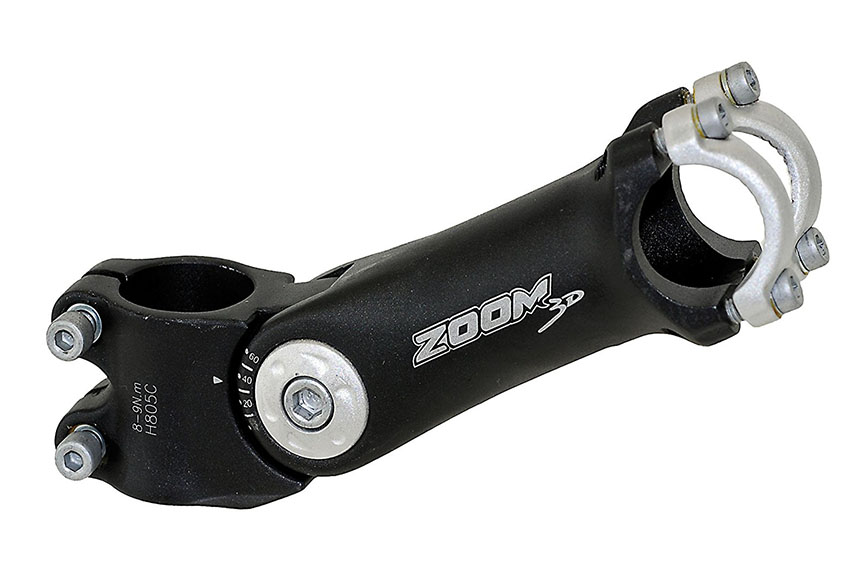
What Size of Bike Stem Should You Have?
Guide to Adjusting Your Bike’s Fit & Stem Sizing
Many bikers experience persistent bodily discomfort as a result of riding with pieces of bike hardware that are incorrectly fit for the size of their body. Many parts of the bike from the handlebars to the head tube, seat height and stem size play a factor in how well fit a bike is for an individual cyclist.
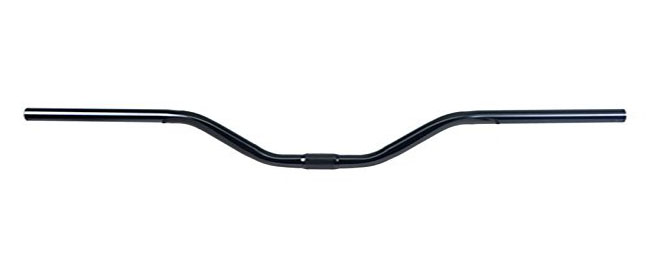 Here, we provide a guide for bikers to improve their physical alignment while riding, through customizing their bikes adjustable features, as well as to address the question of what size bike stem you should have.
Here, we provide a guide for bikers to improve their physical alignment while riding, through customizing their bikes adjustable features, as well as to address the question of what size bike stem you should have.
Incorrect Bicycle Size
Warning Signs and Ramifications
All too often, bikers can develop pain in their knees, lower back, neck, feet, and/or hands. No matter if you are a recreational biker or avid cyclist, riding your bike should never cause physical pain or discomfort—especially for those who bike regularly, any of these warning signs are indicative of a discrepancy in the fit of your bike. If left unattended, over time these issues can cause permanent damage to your joints and muscle ligaments.
Adjustable Bike Parts
Most bicycles are designed with several parts that are adjustable for a rider’s individual optimal fit. If the frame size is the wrong fit for your height, any amount of individual adjusting will not do much to help offset the ramifications of your body’s physical compensation for the incorrect fit, so, it is important that you are sure that your bikes frame is correctly sized for you.
For those who are positive that their bike’s frame is the correct size, there are three main adjustable features that will improve the fit of your bicycle.
● Seat Height
Often, the most overlooked attribute of a bicycle’s fit is in the height of the seat. For those who bike irregularly and recreationally, the height of the bike seat can be thought of as irrelevant. Nothing could be further from the truth.
The height of your bike seat determines the amount of leg extension that you have while pedaling. The less leg extension you have, the less power you pedal with. Decreased leg mobility means a decrease in the muscles that are available to assist in pedal strokes. This often results in premature fatigue and physical pain in the front of the knee.
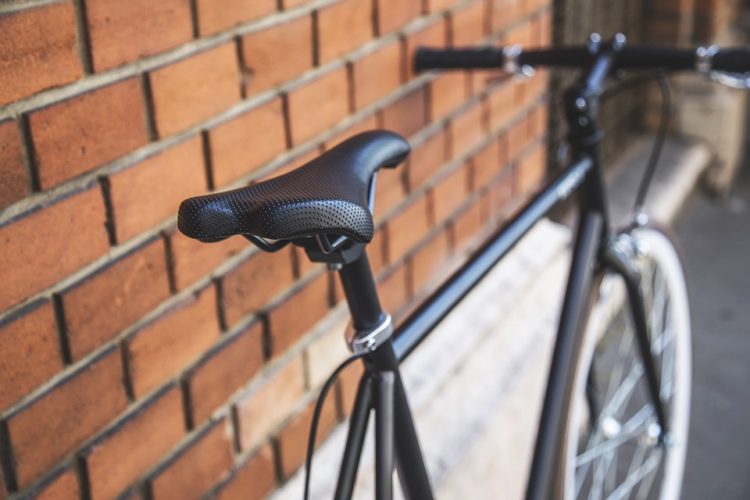 Adjusting your bike’s seat height is the easiest way to improve the quality and ease of your riding. Adjust the height until your leg is nearly straight with your foot on the pedal. When pedaling, your legs should come almost to their full extension on the bottom of the down pedal stroke. That way, you give the optimal amount of muscle engagement to the effort of propelling the bicycle and prevent your knees from becoming cramped.
Adjusting your bike’s seat height is the easiest way to improve the quality and ease of your riding. Adjust the height until your leg is nearly straight with your foot on the pedal. When pedaling, your legs should come almost to their full extension on the bottom of the down pedal stroke. That way, you give the optimal amount of muscle engagement to the effort of propelling the bicycle and prevent your knees from becoming cramped.
● Saddle Placement
If you are experiencing lower back pain or upper neck pain as a result of biking, this may be an indicator that you have to stretch your body out too much while riding. If you are sure that the frame is correctly fitted for your body, then you might want to try adjusting the saddle to a more forward position.
 With your hands on the handlebars, your hands should be almost under your elbows, providing structural seated support for your neck and lumbar.
With your hands on the handlebars, your hands should be almost under your elbows, providing structural seated support for your neck and lumbar.
● Handlebar Stem Height
The biggest indicator of a discrepancy in the size of your handlebar’s stem is the occurrence of feeling numb or tingly hands. Stem spacers can help to fix this discrepancy; however, they are often they are overused. Using an excessive amount of stem spacers is dangerous and irresponsible as it disturbs the handling and control of the bike.
Bike Stem Fit
Unlike the saddle stem height and placement adjustability, the handlebar stem is a fixed piece of hardware, which is fit for each bike. Although not adjustable, the handlebar stem is replaceable. The stem is the piece of hardware that connects the handlebars to the bike’s frame, and thus, is fitted specifically for the frame size, type, and design.
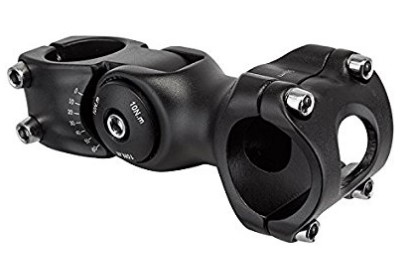 If you are sure that your bike is the correct frame size and it came with its factory parts, almost undoubtedly, the stem is of the correct length. However, if you have an older or previously-owned bicycle with a mismatch of hardware, it will be necessary to ascertain the correct stem size for the fit of your bike.
If you are sure that your bike is the correct frame size and it came with its factory parts, almost undoubtedly, the stem is of the correct length. However, if you have an older or previously-owned bicycle with a mismatch of hardware, it will be necessary to ascertain the correct stem size for the fit of your bike.
What Size Bike Stem Should You Have?
The size of stem you should have depends on the bike’s size, as well as your fit to the bike. Some of the common indicators of a sizing discrepancy in your stem include constantly shifting around on the bike and numbness in the elbows, hands, fingers, shoulders, or the upper back.
Bikers should not have a difficult time bending their elbows while pedaling and their hips should be able to remain stationary through pedal strokes. The easiest way to determine whether there is a problem in the size of your stem is to get someone to take a picture of you stop your bike from the side. This will allow you to determine if your alignment is correctly placed while in full stride.
 Road bikes and mountain bikes have different stem length requirements and features. For mountain bikers, a long stem will result in slower handling responsiveness and sluggish control. If the stem is too short, the mountain bike will have over-sensitive handling and sporadic control. With mountain bikes, control and handling play a key role in the bikes usefulness on varied terrain.
Road bikes and mountain bikes have different stem length requirements and features. For mountain bikers, a long stem will result in slower handling responsiveness and sluggish control. If the stem is too short, the mountain bike will have over-sensitive handling and sporadic control. With mountain bikes, control and handling play a key role in the bikes usefulness on varied terrain.
For road bikes, the stem length is based on the size of the bike frame. Most road bike racers have long stems, ranging from 110-120 millimeters in length, which allows them to stretch out their bodies to become more aerodynamic. Most road bikes have a stem that is on an angle parallel to the ground, which is often set at -17 degrees.
The vast majority of bikes have a mid-range stem size, ranging from 60-80 millimeters in length, providing a balance of handling efficiency and comfortable physical alignment. Advanced mountain bikers often opt for a short stem of about 40 millimeters, allowing for greater off-road handling and downhill momentum. The only way to be sure that you are getting the correct size is to be fitted by a professional, as a few millimeters of difference can have a significant impact on a biker’s body alignment and riding posture.
